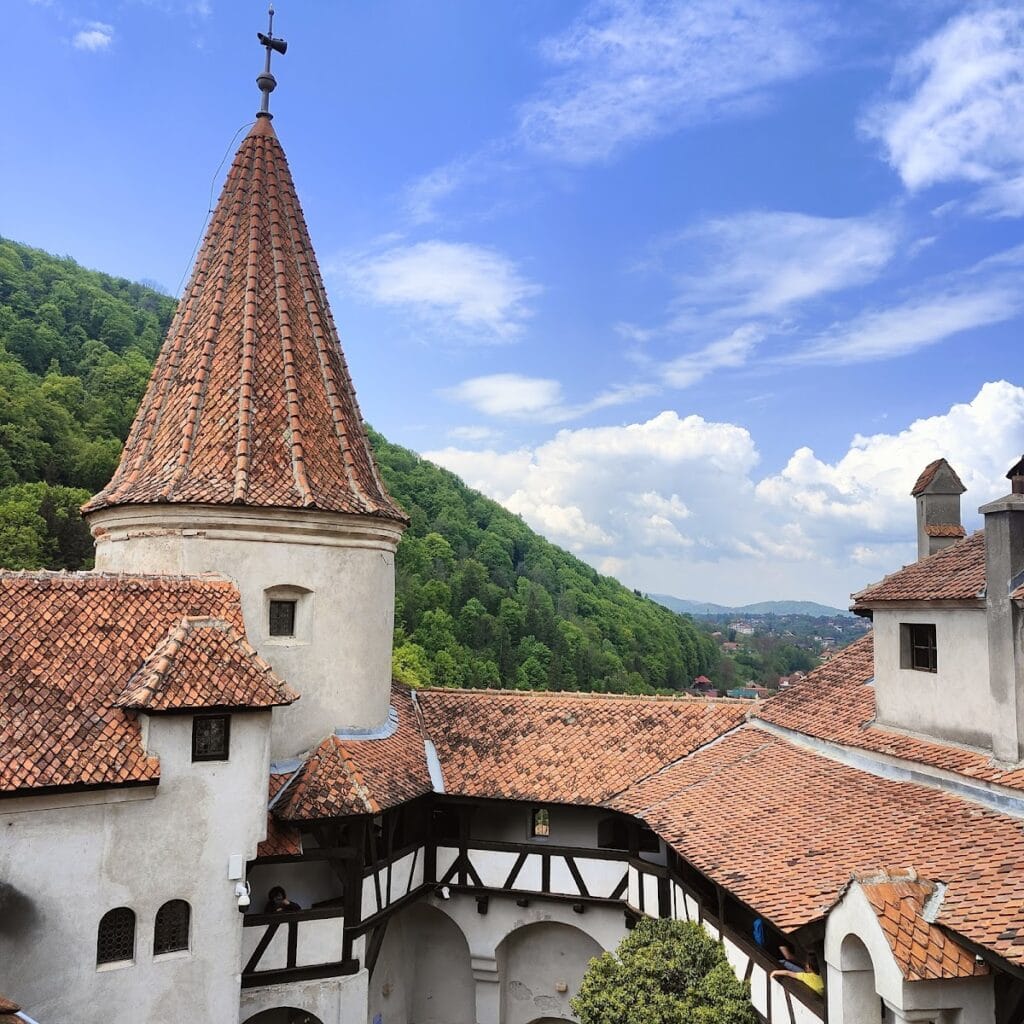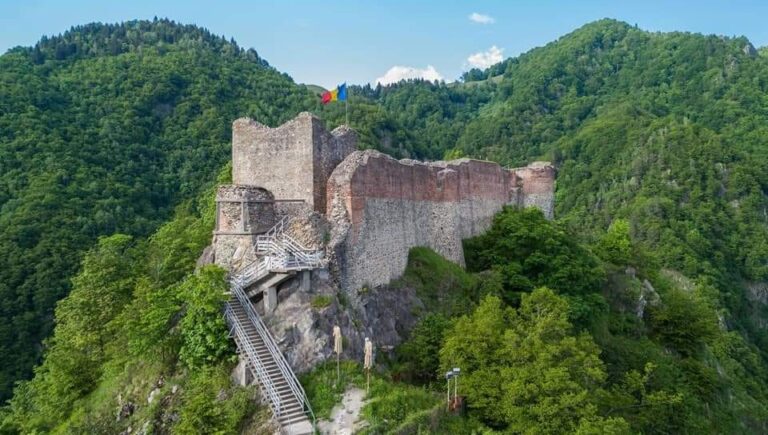Bran Castle: A Medieval Fortress and Museum in Romania
Visitor Information
Google Rating: 4.3
Popularity: Very High
Google Maps: View on Google Maps
Official Website: castelulbran.ro
Country: Romania
Civilization: Medieval European
Remains: Military
History
Bran Castle is located near the town of Bran in present-day Romania. Its origins trace back to the early 13th century when the Teutonic Order, a medieval Christian military group, built a wooden fortress called Dietrichstein. Positioned to guard a mountain pass linking Transylvania with Wallachia, this wooden structure served as a key defensive outpost until it was destroyed during the Mongol invasion of 1242.
Following this destruction, a new stone fortress was authorized by King Louis I of Hungary beginning in 1377, with construction completing around 1388. This stone castle was designed to protect the region from external threats and to oversee important trade routes crossing the Carpathian Mountains. Throughout the 15th and 16th centuries, control of the castle shifted several times. Notably, the Wallachian ruler Mircea the Elder briefly held Bran Castle in the early 1400s and instituted customs controls there, emphasizing its role as an administrative checkpoint. Later, Hungarian kings retained ownership, but after King Vladislas II failed to pay rent, the city of Brașov reclaimed the castle in 1533.
The association of Bran Castle with Vlad III “Țepes,” often known as Vlad the Impaler, is a popular legend but lacks historical evidence. He neither ruled from nor lived in the fortress, and claims that he was imprisoned there are denied by scholarly research.
With the redrawing of borders following World War I, Transylvania became part of Romania through the 1920 Treaty of Trianon. Subsequently, Bran Castle was granted to Queen Marie of Romania as a royal residence. She commissioned extensive restorations under the direction of architect Karel Zdeněk Líman, who infused the castle with a romanticized style. Queen Marie’s daughter, Princess Ileana, inherited the property and operated a wartime hospital within the castle during World War II.
In 1948, the communist government nationalized Bran Castle and transformed it into a public museum. After political changes in Romania, laws passed in 2005 allowed for the restitution of properties taken unlawfully during the communist period. As a result, Bran Castle returned to the ownership of Dominic von Habsburg, son of Princess Ileana, in 2007. Although this process faced parliamentary opposition, the Romanian Constitutional Court affirmed the legitimacy of the restitution. Today, the castle functions as a museum preserving collections related to Romanian rural culture and the royal family heritage.
Remains
Bran Castle stands as a medieval Gothic stone fortress perched atop a rocky hill at the entrance to the Rucăr-Bran pass, situated between two mountain ranges. Its irregular layout follows the natural terrain, constructed primarily from river stone, brick, and timber. Originally, the fortress encompassed several defensive sections and was protected by corner towers, with three principal towers on the north, west, and east sides recognized by the 16th century.
The main gateway faces south and was initially reached via a movable wooden staircase, replaced in the late 19th century with a permanent stone stairway. Within the inner courtyard, a 57-meter deep well was dug to provide water during sieges, a vital feature for sustaining defenders. In 1937, this well saw the installation of an electric lift, with a horizontal tunnel at its base offering secret access toward the lower park area.
Over the centuries, Bran Castle underwent multiple repairs and alterations due to damage from explosions, storms, and fires in the late 16th and early 17th centuries. In 1622, Prince Gabriel Bethlen led significant restoration efforts, including the addition of the southern entrance tower. Later, in 1723, improvements were made to the northern donjon tower, such as the introduction of firing slits for defense, construction of an attic decorated with blind arcades and pilasters, and a double-layered roof designed to reduce fire risk. A wooden pavilion was also built atop this tower, allowing sentries a clear view of the valley below.
The east tower is rectangular and designed for defense through openings that allowed defenders to drop stones or boiling liquids on attackers. This tower also contains a concealed staircase connecting multiple floors, highlighting the castle’s strategic architectural features. During the late 19th century, Austro-Hungarian authorities replaced wooden roofing with more durable materials and reinforced structural elements, including the substitution of wooden entrance stairs with stone.
Between 1921 and 1929, architect Karel Zdeněk Líman carried out a restoration that imparted a romanticized appearance to the castle. This renovation introduced timber framing, attic floors, loggias on the ground level, terraces on upper floors, and two round towers—one above the courtyard well and another near the southern tower. Several rooms were added adjacent to the entrance tower. Defensive openings were converted into windows, and Saxon-style tiled stoves from the 19th century were installed to create a comfortable royal residence environment.
The castle features four floors, including service areas at ground level and richly decorated royal apartments furnished in various European styles. A chapel within the fortress honors Prince Mircea, reflecting its historical connections. The museum collections inside Bran Castle include weapons, armor, and artifacts associated with Vlad the Impaler and the Dracula legend, offering insight into the region’s history and folklore.
Surrounding the castle, an open-air ethnographic museum displays traditional Romanian peasant houses alongside furniture, clothing, and tools, preserving aspects of rural life from the surrounding region. From 1987 to 1993, structural reinforcements using metal ties were added to strengthen the castle’s foundations, ensuring the preservation of this historic fortress for future generations.



